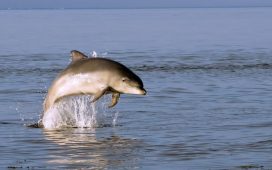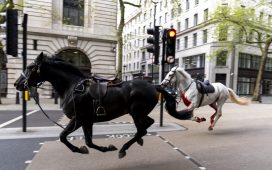A restless white moth, the size of a shirt button, is summer’s phoenix from the water. Half a dozen Cataclysta lemnata may be on the wing at any one time, bubbling up from out of the pond.
Though they skirt the rim, fast-flapping light shapes repeatedly courting the ground with tiny swoops, they never land, never so much as touch terra firma. Always they return to their pond, descending through vegetation to float on a frogbit, or hang from the base of a spearwort stem. Sometimes they sit with wings spreadeagled. Often they suddenly appear self-conscious at being so exposed, and promptly fold their wings away over their backs.
Appearance was everything for the long-ago naturalists who gave this moth its common name. Studying the creature at rest, they called it the small china-mark, after the rows of bright eyespots on its hind wings. Maybe a name suiting its habitat would be more appropriate. Moths appear the very antithesis of wet, with their parched, paper-dry wings, but this species is a water baby.

A movement on the pond drew my attention to the bulbous head and waggling forelegs of a china-mark caterpillar. A semi-aquatic animal, it was protruding from a self-sewn protective tube of duckweed, in the manner of a caddisfly larva. Since the caterpillar eats the same plant, there was something of a house of gingerbread about its situation. In other years, the pond has been blanketed in duckweed; not this summer, the first where the china-mark has left its mark.
Only a few centimetres away, an adult china-mark had been crucified in the meniscus, its splayed wings pinned by surface tension. Days later, I could still make out its ribbed fronds of antennae and peely-wally legs. The rest of the creature had dissolved into a moth soup.
A party of water measurers, all spindly legs and stringy bodies, clustered around the remains like cattle at a trough, barging into each other and jostling for a better position. Scavengers of the surface, they had hit on a liquidised jackpot. Raised up on stick limbs, they bent their straw-like mouthparts down into the water and sucked on insect milkshake.








